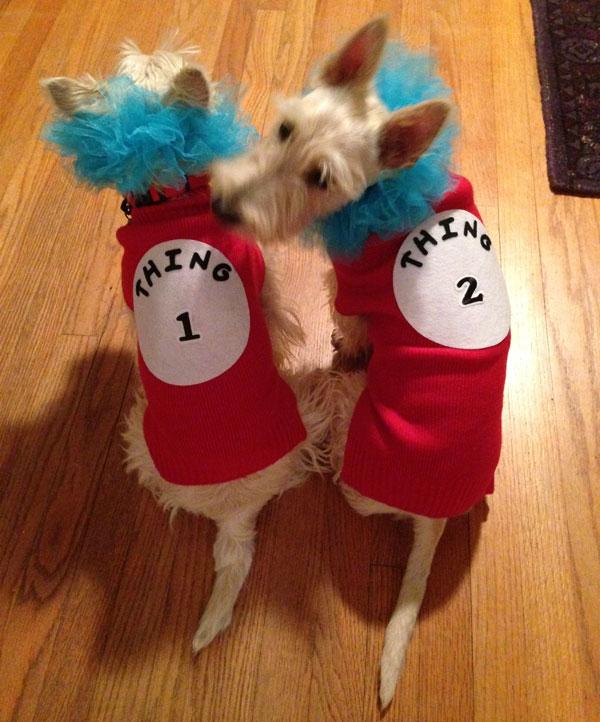
Halloween Safety
Friday, October 21, 2016
Halloween can be a festive time for children and families but for pets, it can be a nightmare. Here are some helpful tips to keep your pet happy and healthy.
The treats are for your two-legged visitors – not your pets.
Chocolate in all forms—especially dark or baking chocolate—can be very dangerous for dogs and cats. Symptoms of chocolate poisoning may include vomiting, diarrhea, rapid breathing, increased heart rate, and seizures.
Candy containing xylitol, an artificial sweetener used in sugar-free candies, can also be poisonous to dogs. Even small amounts of xylitol can cause a sudden drop in blood sugar and subsequent loss of coordination and seizures.
Keep glow sticks and glow jewelry away from pets. While the liquid in these products isn’t likely toxic, it tastes really bad and makes pets salivate excessively and act strangely.
If your pet should eat something toxic, call your veterinarian or the ASPCA Poison Control Center (1-888-426-4435) immediately.
Be careful with your Halloween decorations. While a lit pumpkin looks festive, pets can easily knock it over and start a fire. Curious kittens are at risk of getting burned or singed by the candle flame.
If you are using electric decorations, secure the wire where pets can’t reach it to chew on or where visitors can’t trip on it.
While Halloween plants such as pumpkins and decorative corn are considered nontoxic, they can cause stomach discomfort if eaten by pets. If large pieces are consumed, it could result in intestinal blockage for your pet.
Pet costumes can be tricky. If you are putting a costume on your pet, make sure the pet loves it. For some pets, wearing a costume may cause undue stress.
Pet costumes should fit properly and be comfortable. Make sure the costume doesn’t interfere with your pet moving, seeing, breathing, hearing, or opening its mouth.
Make sure the costume doesn’t have any small, dangling or easily chewed off pieces that could be a choking hazard for your pet.
Get your pet accustomed to the costume a few times before trick or treat night. Never leave your pet unattended while it is wearing a costume.
If all else fails, your pet can always go in its ‘birthday suit’ or wear a festive bandana.
Halloween is a busy time with people and cars on the streets. It is best to keep your pets indoors away from the activity. Dogs and cats have been known to sneak out when the door is open for trick or treaters. Sadly, vicious pranksters have been known to tease, injure, or steal pets on Halloween night.
If your pet is wary of strangers or has a tendency to bite, keep him/her in a separate area. Children dressed in unusual costumes and yelling for their candy can be scary for your furry family members.
Be sure your pet is properly identified. In a split second, your pet can dash out an open door as eager trick-or-treaters greet you. A microchip or collar with ID tags can be a lifesaver for a lost pet.
by Elisabeth J. Giedt, DVM
Veterinary Viewpoints is provided by the faculty of the OSU Veterinary Medical Hospital. Certified by the American Animal Hospital Association, the hospital is open to the public providing routine and specialized care for all species and 24-hour emergency care, 365 days a year.
